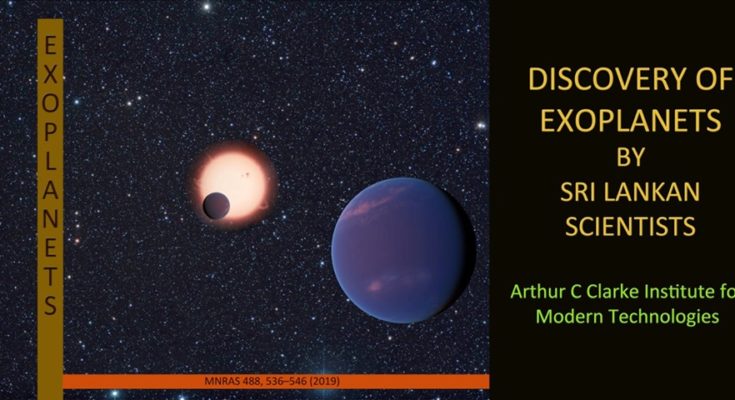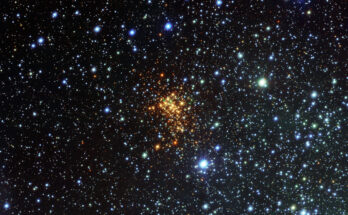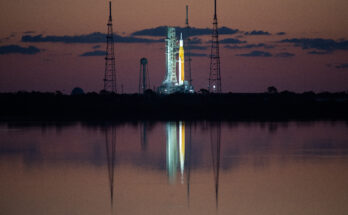As a result of research conducted at the Arthur C Clark Centre for Modern Technologies, a group of Sri Lankan scientists have found a new extra-solar planetary system (Exoplanets) for the first time in the nation’s history. This discovery was announced during a special media briefing held at the Arthur C Clark Center for Modern Technologies on 20th August 2019.
Mr. Saraj Gunesekara, the Principle research scientist at the Astronomy division of the Arthur C Clark Institute began a research programme to search for exoplanets in 2017. Then in 2018, 27 year old Mahesh Herath joined the institute on a contract basis to take part in this research project and has been with the programme ever since.
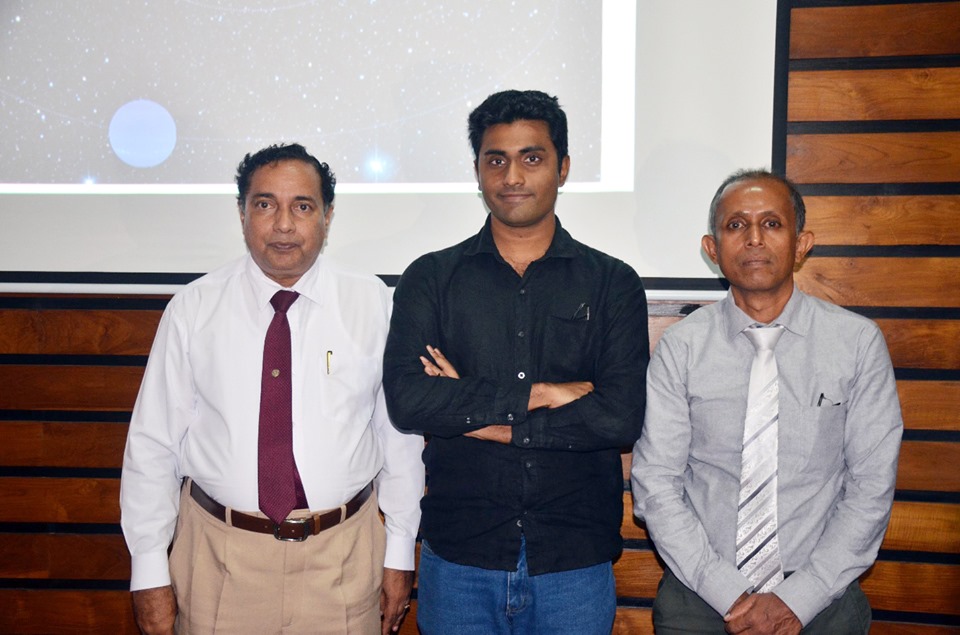
The NASA Kepler/K2 mission which is a spacecraft with a powerful optical telescope, had observed 588, 991 stars over the course of 10 years since 2009, and the data was made available to the general public by NASA. In order to search these thousands of observed data sets, an algorithm was
developed by Mr Herath to mine through the data. In 2018, the Sri Lankan science team decided to do further studies of the star designated as EPIC 212737443, which was observed during Campaign 6 of the Kepler/K2 mission. During these investigations, two previously undiscovered planets were found to orbit this star. Subsequently, 11 scientists from several different countries agreed to take part in the further study of this system in order to concentrate on different aspects of the characterization of these
planets and the host star. At present Mr Herath is working under the guidance of Professor Chandana Jayaratne of the University of Colombo to complete his MPhil degree.
The results of this research venture were accepted for publication by the prestigious 200 year old journal known as the Monthly Notices of the Royal Astronomical Society (MNRAS), which is the premier Astronomy and Space science journal in the United Kingdom. The article was published in July 2019, and was subsequently accepted as new planets by NASA/JPL and the California Institute of Technology, University of St Andrews, among others. These new planets have now been added to the NASA exoplanet archive as well as the Exoplanet Encyclopaedia as well as Wikipedia, all of which are available online.
The two planets have orbital periods of 13 and 65 days respectively, with the second planet being among the few planets found by the Kepler mission with orbital periods greater than 50 days. Both planets are closer to this star than Mercury is to our sun. The first planet is at 1/10 th the distance between the Earth and sun, while the second planet is at 1/3 rd the distance between the Earth and sun.
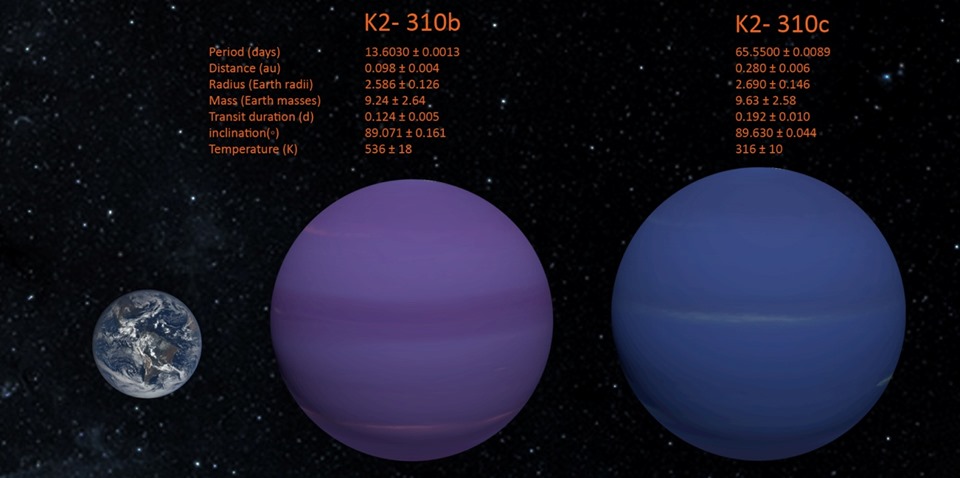
The star itself is 2/3 the radius and mass of our sun, and is a type of star known as an “Orange dwarf”. This star can be found near the constellation of Virgo, and is at a distance of 1133 light years from our Solar System. This star was found to be cooler than our sun, with a surface temperature of 4700 Kelvins compared to the 5800 Kelvin temperature of our Sun.
The smaller of these two planets, named K2-310b, has a radius of 16,500 Km (2.6 times the radius of the Earth) with an equilibrium temperature of 263 degrees centigrade, while the larger second planet has a radius of 17,220 Km (2.7 times the radius of the Earth) with an equilibrium temperature of 42 degrees centigrade. This means that the two planets belong to a class of planets known as sub- Neptunes, which have sizes between that of Earth and Neptune. The sizes of the planets strongly
imply that they have atmospheres thicker and larger than that of our Earth, likely composed of elements such as Hydrogen, Helium and perhaps water vapour and Ammonia. There is uncertainty whether these planets are rocky or gaseous due to their existence in a size range that hovers between the generally accepted sizes for both rocky planets and gaseous planets. What is likely is that the planets may have characteristics of both types of planets, possessing rocky inner layers and a thick gaseous envelope. Using statistical and empirical methods, the masses of the two planets were inferred to be roughly equal at about 9.4 times the mass of the Earth. However, further studies must be conducted to know more about the masses, compositional and atmospheric properties of these planets.
Due to the proximity of these planets to the star, it is possible that they are in a state known as “Tidal Locking”. This happens when the rotational time of a planet is equal to its orbital period, meaning that only one side of the planet faces the star. An example of tidal locking closer to home is our own
moon.
As the first exoplanetary system discovered under the leadership of Sri Lankan scientists, it is a great leap for scientific research within the nation, and would provide a pathway for future scientists to continue in Astronomy research. As of this year, Sri Lanka joins a select group nations with
institutions from which exoplanets were discovered; a list that include mostly developed nations such as the United States, Canada, Western, Northern and Central European nations, Australia, Japan and China.

